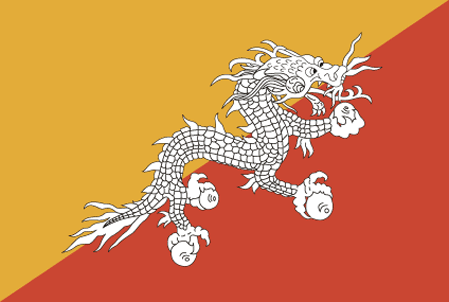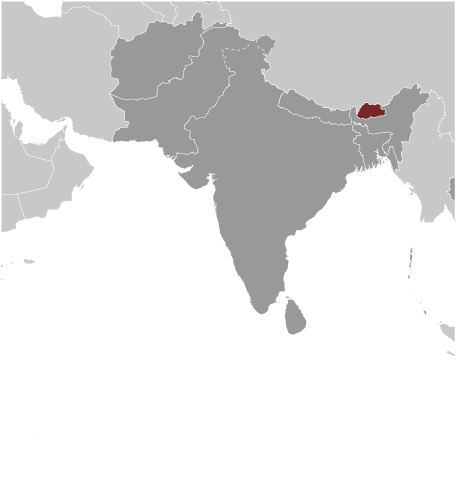
|
|
Advertisements:
MilitaryMilitary branches
Royal Bhutan Army (includes Royal Bodyguard and Royal Bhutan Police) (2009) Military service age and obligation
18 years of age for voluntary military service; no conscription; militia training is compulsory for males aged 20-25, over a 3-year period (2011) Manpower available for military service
Males age 16-49 202,407
Females age 16-49 180,349 (2010 est.) Manpower fit for military service
Males age 16-49 157,664
Females age 16-49 144,861 (2010 est.) Manpower reaching militarily significant age annually
Male 7,363
Female 7,095 (2010 est.) Military expenditures World Ranking: 126
1% of GDP (2005 est.)
Comments
Add a new comment: |
Advertisement
Members area
Bhutan (Thimphu):
 
GPS points from Bhutan (Thimphu)
|
||||||||

 In 1865, Britain and Bhutan signed the Treaty of Sinchulu, under which Bhutan would receive an annual subsidy in exchange for ceding some border land to British India. Under British influence, a monarchy was set up in 1907; three years later, a treaty was signed whereby the British agreed not to interfere in Bhutanese internal affairs and Bhutan allowed Britain to direct its foreign affairs. This role was assumed by independent India after 1947. Two years later, a formal Indo-Bhutanese accord returned the areas of Bhutan annexed by the British, formalized the annual subsidies the country received, and defined India's responsibilities in defense and foreign relations. A refugee issue of over 100,000 Bhutanese in Nepal remains unresolved; 90% of the refugees are housed in seven United Nations Office of the High Commissioner for Refugees (UNHCR) camps. In March 2005, King Jigme Singye WANGCHUCK unveiled the government's draft constitution - which would introduce major democratic reforms - and pledged to hold a national referendum for its approval. In December 2006, the King abdicated the throne to his son, Jigme Khesar Namgyel WANGCHUCK, in order to give him experience as head of state before the democratic transition. In early 2007, India and Bhutan renegotiated their treaty to allow Bhutan greater autonomy in conducting its foreign policy, although Thimphu continues to coordinate policy decisions in this area with New Delhi. In July 2007, seven ministers of Bhutan's 10-member cabinet resigned to join the political process, and the cabinet acted as a caretaker regime until democratic elections for seats to the country's first parliament were completed in March 2008. The king ratified the country's first constitution in July 2008.
In 1865, Britain and Bhutan signed the Treaty of Sinchulu, under which Bhutan would receive an annual subsidy in exchange for ceding some border land to British India. Under British influence, a monarchy was set up in 1907; three years later, a treaty was signed whereby the British agreed not to interfere in Bhutanese internal affairs and Bhutan allowed Britain to direct its foreign affairs. This role was assumed by independent India after 1947. Two years later, a formal Indo-Bhutanese accord returned the areas of Bhutan annexed by the British, formalized the annual subsidies the country received, and defined India's responsibilities in defense and foreign relations. A refugee issue of over 100,000 Bhutanese in Nepal remains unresolved; 90% of the refugees are housed in seven United Nations Office of the High Commissioner for Refugees (UNHCR) camps. In March 2005, King Jigme Singye WANGCHUCK unveiled the government's draft constitution - which would introduce major democratic reforms - and pledged to hold a national referendum for its approval. In December 2006, the King abdicated the throne to his son, Jigme Khesar Namgyel WANGCHUCK, in order to give him experience as head of state before the democratic transition. In early 2007, India and Bhutan renegotiated their treaty to allow Bhutan greater autonomy in conducting its foreign policy, although Thimphu continues to coordinate policy decisions in this area with New Delhi. In July 2007, seven ministers of Bhutan's 10-member cabinet resigned to join the political process, and the cabinet acted as a caretaker regime until democratic elections for seats to the country's first parliament were completed in March 2008. The king ratified the country's first constitution in July 2008.